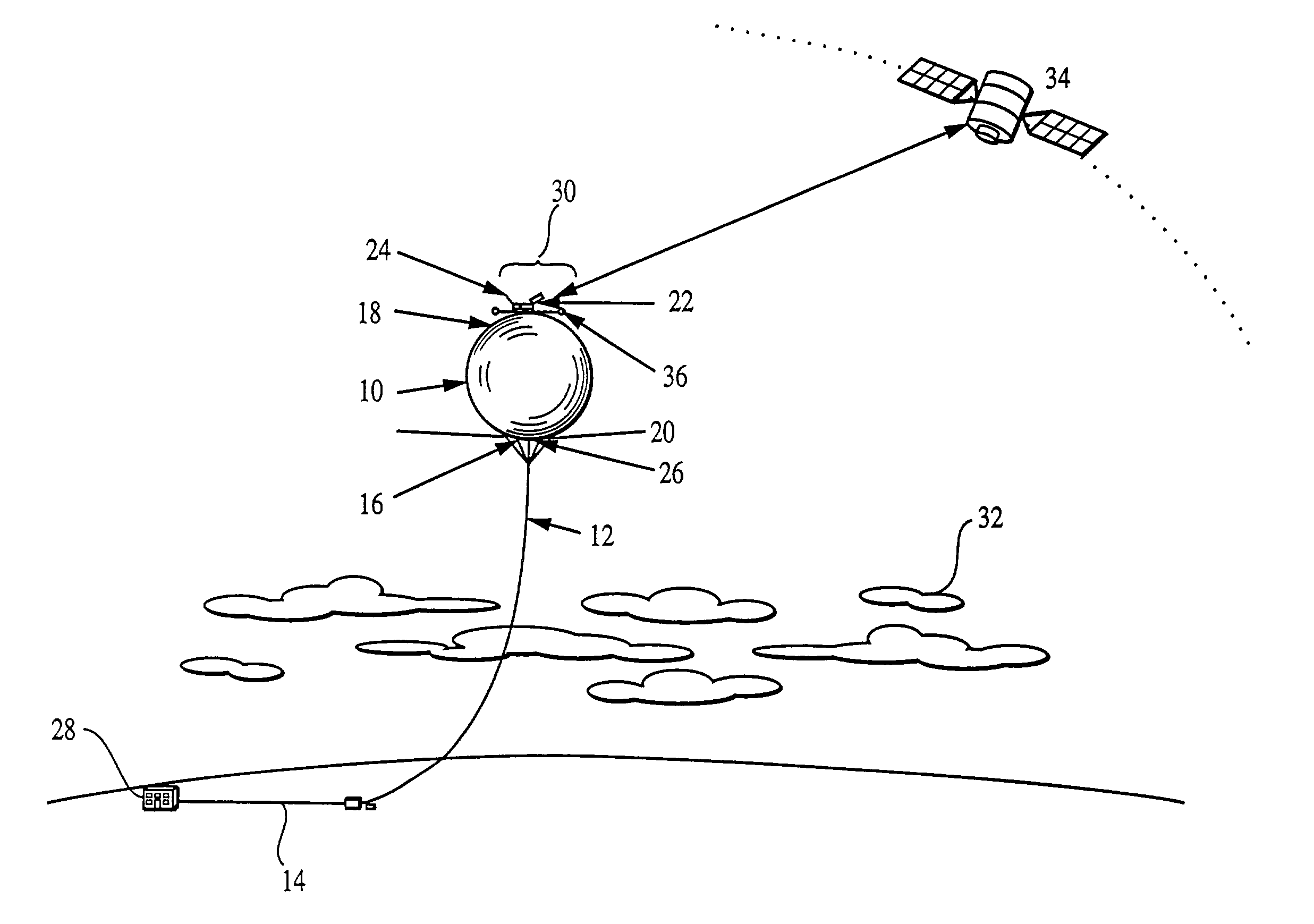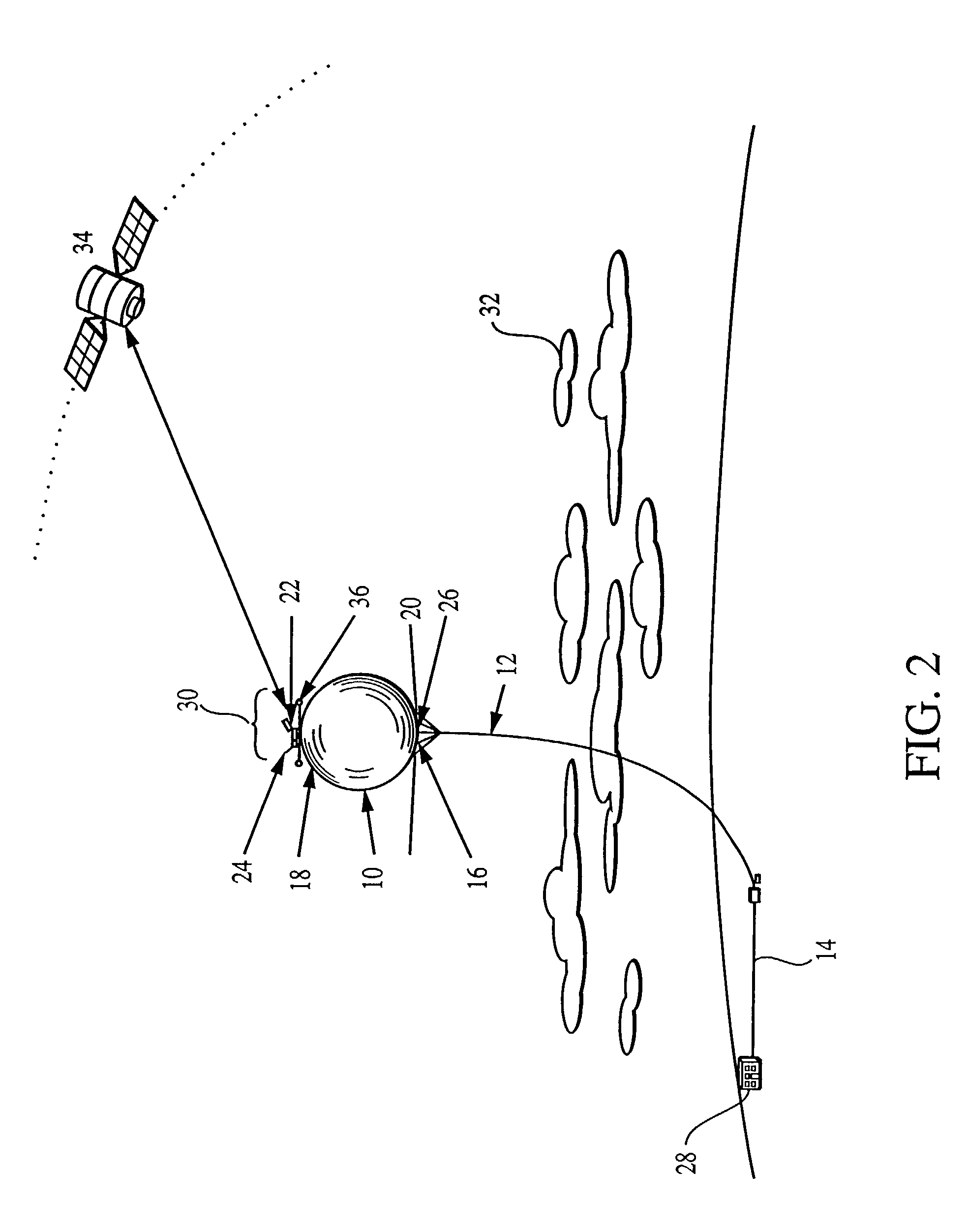Optical communication system using a high altitude tethered balloon
a communication system and high-altitude technology, applied in the field of optical communication systems using high-altitude tethered balloons, can solve the problems of affecting the operation of optical communication systems in the atmosphere, scattering optical beam energy, and affecting communication, and achieves high data rate optical communication, facilitate data transmission ra
- Summary
- Abstract
- Description
- Claims
- Application Information
AI Technical Summary
Benefits of technology
Problems solved by technology
Method used
Image
Examples
Embodiment Construction
[0031]FIG. 2 is a diagram of an embodiment of an optical communication system using a high altitude tethered balloon according to the present invention. The system includes a spherical balloon 10 attached by a tether 12 to an automated winch 14 located on the ground. A pressurization system 16 is used to maintain the differential pressure between the balloon's internal gas and the ambient atmosphere. Power for a payload 30 and the pressurization system 16 is supplied by solar array cells 18 in combination with fuel cells 20 for energy storage. The payload 30, mounted on the balloon, includes an Acquisition, Pointing and Tracking (ATP) system 22 that provides accurate position and attitude information for target tracking, and other communications equipment. Targets may include but are not limited to various space-based instrumentation 34 such as satellites, spacecraft in deep space, and high altitude airplanes and missiles. Also included in the payload are Global Positioning System (...
PUM
 Login to View More
Login to View More Abstract
Description
Claims
Application Information
 Login to View More
Login to View More - R&D
- Intellectual Property
- Life Sciences
- Materials
- Tech Scout
- Unparalleled Data Quality
- Higher Quality Content
- 60% Fewer Hallucinations
Browse by: Latest US Patents, China's latest patents, Technical Efficacy Thesaurus, Application Domain, Technology Topic, Popular Technical Reports.
© 2025 PatSnap. All rights reserved.Legal|Privacy policy|Modern Slavery Act Transparency Statement|Sitemap|About US| Contact US: help@patsnap.com



